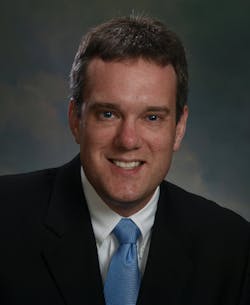On the desk of President Harry S. Truman sat a sign that read, “The Buck Stops Here.”
In a case of professional negligence, the contractor’s expert opined that “the buck stops . . . with the quality assurance manager.” This is the conclusion of the 12-year history (from contract award to the most recent of several court opinions) of W.C. English, Inc. v. Rummel, Klepper & Kahl, LLC, et al., U.S. District Court, Western Dist. of Virginia, Lynchburg Division, Case No. 6:17-cv-00018 (Oct. 13, 2021).
In 2009, the Virginia Department of Transportation (VDOT) awarded the contractor a $75 million contract for construction of a bridge over Interstate 81 near Lexington, Virginia. The contractor engaged a separate firm to provide quality assurance services for the project.
After most of the bridge deck had already been placed, VDOT learned the depth of concrete over the deck rebar was too shallow. The prime contract required an 8.5-inch concrete deck reinforced by two separate mats of crisscrossed rebar, including a 1.5-inch concrete cover beneath the mats and a 2.75-inch top cover. To achieve this, the contractor first installed 2.5-inch chairs or slab runners between the two mats.
However, the runners were later changed to only 1.75-inches. Ultimately, the top cover was lifted to 3.75 inches instead of the required 2.75 inches. VDOT refused to accept the bridge and, upon VDOT’s demand, the contractor demolished and rebuilt the entire structure for over $3.1 million.
The contractor sued the QA firm. During a jury trial, the contractor’s project coordinator testified that the QA manager incorrectly demanded the change from a 2.75-inch runner to the 1.75-inch runner and, but for that demand, the lift would have finished at the proper height. The QA manager’s demand for the change was accompanied by a temporary work stoppage and a threat to withhold payment if the contractor did not comply with the demand.
After installing the 1.75-inch runners and before concrete placement, the QA manager was informed that most of the bridge deck was out of spec. The QA manager completed a pre-placement inspection and concluded that the “spacing, location, and edge clearances of all reinforcing mats conform.”
The jury found that the QA firm had breached its standard of care by acting professionally negligent, which is a higher standard than the contractor’s standard of care (simple, breach of contract). The contractor is judged by its conformance to the contract and performance of its work in a (reasonable) workmanlike manner.
To prove breach of that duty, it must be shown by a preponderance of evidence that the contractor more likely than not did not properly perform. Under Virginia law and in this case, the QA firm is held to a higher standard of professional negligence or adherence to the standards and requirements pertaining to the practice of his or her profession. To prove professional negligence, clear and convincing evidence is needed to show more than “more likely than not,” but that it is very likely that the professional did not adhere to the standards of its peers.
If you had to put numbers to these words, a preponderance of the evidence or “more likely than not” is about 51%, while clear and convincing evidence or “very likely” is about 70%. By statutes, some states have adjusted downward the standard of care for professionals, and thereby, slightly lowered the bar to prove breach of the professional’s duty.
In this case, the jury agreed with the contractor’s expert witness that “when the buck stops, it actually stops with the quality assurance manager.” The jury found that while the contractor shared some responsibility for the defective work, the QA firm shared much of the blame (in this case, 70%). R&B
About the Author

Jon Straw
Jon Straw is a partner with Kraftson Caudle, PLC, a law firm in McLean, Va., specializing in heavy-highway and transportation construction. Straw can be contacted via e-mail at [email protected].
